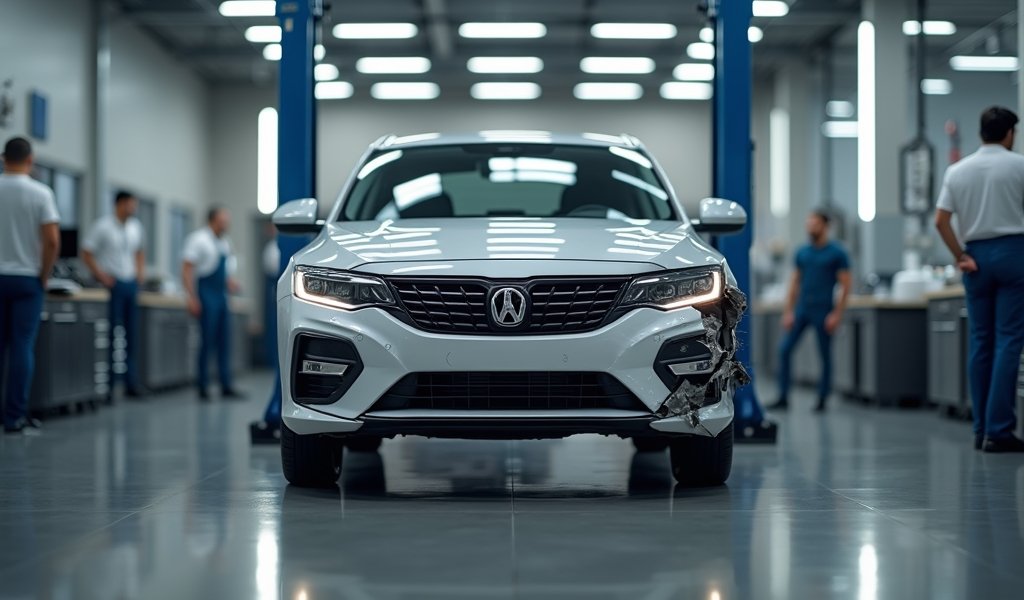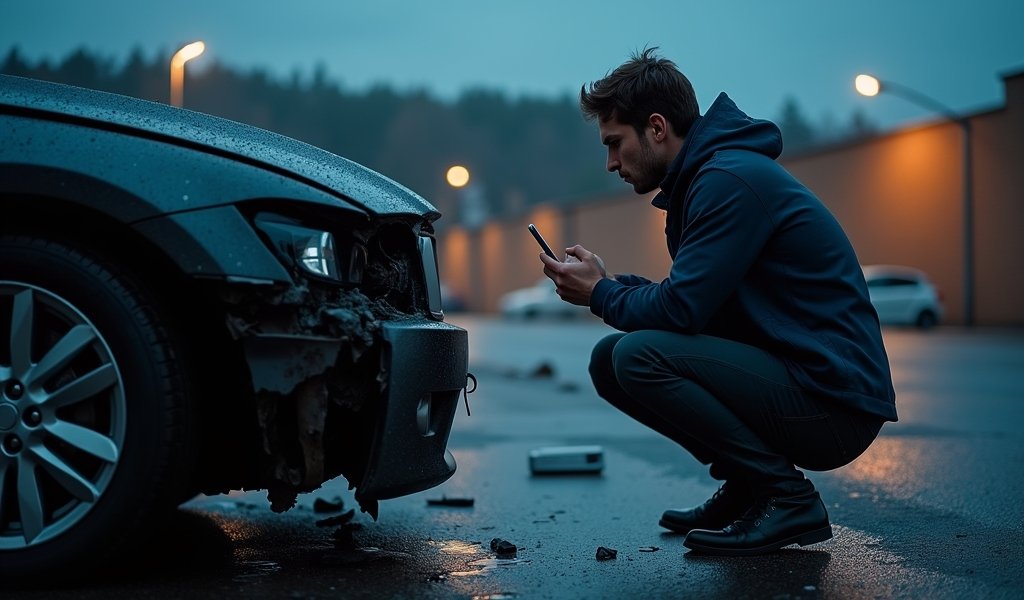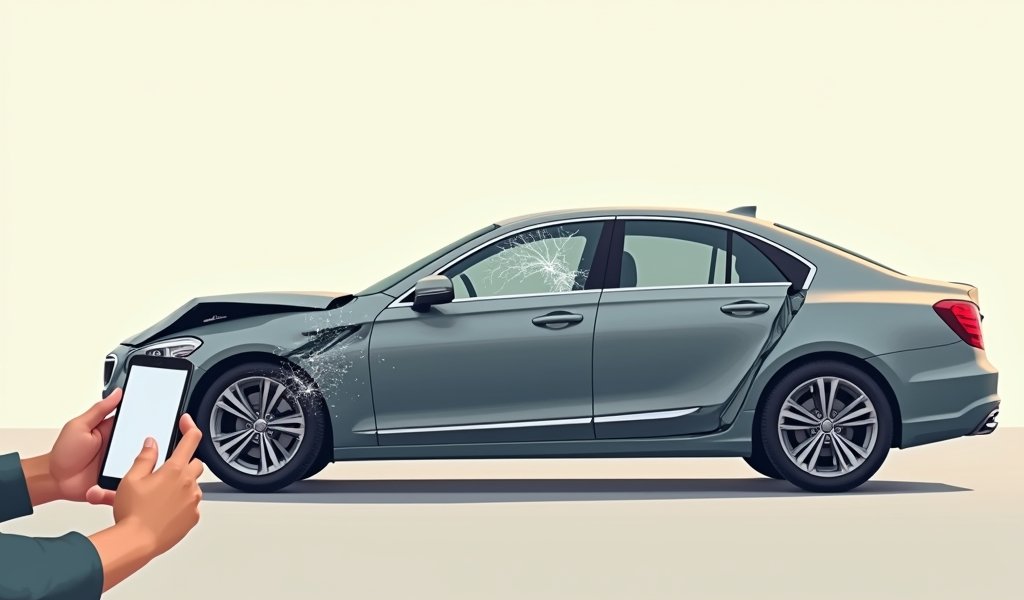Overview
This article provides a detailed guide on documenting car accidents properly for insurance claims, including steps to take immediately after a crash, essential information to collect, creating photographic evidence, obtaining police reports, tracking medical documentation, and effectively communicating with insurance companies. Proper documentation is crucial as approximately one in five auto insurance claims are denied due to poor documentation or missed deadlines, making thorough record-keeping at the accident scene the key difference between a smooth claim process and a frustrating denial.
Table of Contents
- Immediate Steps After a Car Crash
- Essential Information to Collect
- Photographic Evidence Guide
- Police Report Documentation
- Medical Documentation
- Creating Your Own Accident Report
- Communicating with Your Insurance Company
- Common Documentation Mistakes to Avoid
- Using Technology to Your Advantage
- Conclusion
- Frequently Asked Questions
Car crashes happen in the blink of an eye, but the aftermath can drag on for months if you don’t have proper documentation. As mechanics who’ve seen countless vehicles roll into our shop after accidents, we know firsthand how crucial solid documentation is for insurance claims. In fact, insurance industry studies show that about one in five auto insurance claims get denied because of poor documentation or missed deadlines. So let’s roll up our sleeves and walk through exactly how to document a car crash for insurance to make sure you’re covered.
Immediate Steps After a Car Crash
When metal meets metal on the highway, your adrenaline kicks into overdrive. But take a deep breath—what you do in these first moments matters tremendously.
First things first: check for injuries. Your safety and the safety of others trumps everything else. If anyone’s hurt, call 911 immediately. Even if injuries seem minor, it’s better to have medical professionals make that call.
Once you’ve established everyone’s okay (or help is on the way), move vehicles to safety if possible. A fender bender in the middle of a busy intersection is a recipe for a second accident. However, if there are serious injuries or significant damage, leave everything as is for the police to assess.
Speaking of police—yes, you should call them. Even for minor accidents. A police report serves as an official record and can be golden when dealing with insurance companies. In most states, police reports are legally required when injuries occur or damage exceeds certain thresholds (usually $500-$1,000).
Essential Information to Collect
Think of yourself as a detective at an accident scene. Your job? Collect every scrap of information that might be relevant. Trust me—as someone who’s helped countless customers navigate insurance claims, you can never have too much documentation.
Start with the basics from all drivers involved:
- Full names and contact information
- Driver’s license numbers
- License plate numbers
- Vehicle make, model, and year
- Vehicle identification numbers (VINs)
Insurance details are obviously critical. Get the insurance company name, policy number, and effective dates from each driver. Take a photo of their insurance card if possible—it’s quicker and ensures accuracy.
Often overlooked but incredibly valuable: witness information. If bystanders saw what happened, collect their contact details. Their unbiased account could be the difference-maker if the other driver’s story suddenly changes.

Photographic Evidence Guide
Your smartphone is your best friend after an accident. Those high-resolution photos can capture details your memory might miss and serve as irrefutable evidence down the line.
Start wide and work your way in. First, capture the entire scene from multiple angles, showing the positions of all vehicles and their relation to the road, traffic signals, and surroundings. These context shots help establish how the accident occurred.
Next, take medium-distance photos showing the point of impact and the relationship between vehicles. Then zoom in for detailed shots of all damage—not just to your car, but to all vehicles involved. Don’t forget often-missed areas like undercarriages or wheel wells where damage might hide.
Environmental factors matter too. Snap photos of:
- Road conditions (wet pavement, potholes, construction)
- Weather conditions
- Traffic signals or signs
- Skid marks (with something for scale if possible)
- Debris from the accident
Pro tip from the garage: take more photos than you think necessary. In my 20+ years working on collision repairs, I’ve never heard a customer say, “I wish I’d taken fewer photos after my accident.” But I’ve heard plenty lament not having enough.
Police Report Documentation
When the officers arrive, they’ll create an official report. This document carries significant weight with insurance companies, so make sure you understand how to get it and what it contains.
Before the officer leaves, ask for the report number and instructions on how to obtain a copy. In many jurisdictions, you can request it online after 3-5 business days. Some departments might charge a small fee, but it’s worth every penny.
Once you have the report, review it carefully for accuracy. Check that all basic information is correct—names, dates, locations, vehicle details. More importantly, verify that the officer’s description of the accident matches what happened. If there are errors or omissions, contact the police department about their amendment process. Usually, you’ll need to submit correction requests in writing with supporting evidence.
What if police don’t respond? In some busy urban areas, officers might not come for minor accidents without injuries. If that happens, head to the nearest police station to file a report yourself as soon as possible. According to NHTSA data, self-reported accidents still create an official record that insurance companies respect.
Medical Documentation
I’ve seen it countless times in our shop: customers declining medical attention after an accident, only to develop symptoms days later. Here’s some straight talk from someone who’s witnessed the aftermath: get checked out, even if you feel fine.
Many crash injuries—especially soft tissue damage like whiplash—don’t present symptoms immediately. The adrenaline from the accident can mask pain, and some injuries develop gradually over 24-72 hours.
From an insurance perspective, medical documentation creates a clear link between the accident and your injuries. Without prompt medical attention, insurance companies might argue that your injuries came from something else.
Keep detailed records of:
- Initial emergency room or doctor visits
- Follow-up appointments
- Prescribed medications
- Physical therapy sessions
- Medical bills and receipts
- Documentation of missed work days
Additionally, photograph visible injuries like bruises, cuts, or swelling. Take sequential photos as they heal, which can help demonstrate their severity and duration.

Creating Your Own Accident Report
Even with a police report, creating your own detailed account of the accident provides additional protection. Memory fades quickly, especially after traumatic events, so document everything while it’s fresh.
As soon as you’re safely able, write down your recollection of events. Include details like:
- Your direction of travel
- Approximate speed
- Lane position
- What you saw the other driver doing
- What happened immediately before, during, and after impact
- Any statements made by the other driver (especially admissions of fault)
Draw a simple diagram of the accident scene. You don’t need artistic talent—just sketch the road layout, position of vehicles before and after the collision, direction of travel, and point of impact. Mark relevant features like traffic lights, stop signs, or crosswalks.
Note environmental factors too: weather conditions, time of day, visibility issues, and road conditions all matter. Was the sun in your eyes? Was it raining? Was there a pothole that contributed to the accident? These details might seem minor now but could become crucial later.
Communicating with Your Insurance Company
Having spent decades helping customers navigate post-accident repairs, I can tell you that prompt, thorough communication with your insurer is non-negotiable. Call your insurance company as soon as possible—ideally within 24 hours of the accident.
Before making that call, gather all your documentation so you can provide a complete picture. Your insurer will want to know the basics: when and where the accident happened, who was involved, and the extent of damage and injuries.
Be honest but careful with your words. Stick to the facts without speculation or admission of fault. Even saying “I’m sorry” can sometimes be interpreted as accepting blame.
Ask about next steps in the claims process:
- When and how to submit documentation
- Whether you need to obtain repair estimates
- If a claims adjuster will contact you
- Your coverage details and deductible
- Rental car coverage if applicable
Document every interaction with your insurance company. Note the date, time, the representative’s name, and what was discussed. This paper trail can be invaluable if disputes arise about what was said or promised.
Remember that dealing with car insurance after an accident is a process, not a one-time conversation. Stay engaged throughout and don’t hesitate to ask questions if something isn’t clear.
Common Documentation Mistakes to Avoid
In our repair shops, we’ve heard thousands of accident stories, and certain documentation mistakes come up repeatedly. Avoid these pitfalls to strengthen your claim.
First, don’t wait too long. Time erodes evidence and memories. Skid marks fade, witnesses become harder to locate, and injuries may be harder to connect to the accident. Document everything immediately and file your claim promptly.
Second, don’t skimp on details. “The other car hit me” isn’t sufficient documentation. Specificity matters—which direction were both vehicles traveling? Which parts of the vehicles made contact? What preceded the collision?
Third, never admit fault at the scene, even if you think you might be responsible. Determining fault in accidents is complex and depends on many factors you might not be aware of. Let the insurance companies and police sort it out based on evidence.
Fourth, don’t neglect consistent follow-through. Many claims are denied not because of what happened immediately after the accident, but because people drop the ball during the weeks that follow. Stay organized, meet deadlines, and respond promptly to requests for information.
Finally, don’t accept a quick settlement before understanding the full extent of damage and injuries. Some vehicle problems don’t become apparent until later, and some injuries take time to fully manifest. Rushing to settle could leave you with uncovered expenses.
Using Technology to Your Advantage
The digital age offers powerful tools for accident documentation that weren’t available just a few years ago. As professional mechanics, we’ve seen how technology can make the difference in disputed claims.
Dashcams provide unbiased evidence of how an accident occurred. If you have one, make preserving that footage your priority after ensuring everyone’s safety. Many newer models automatically save footage when they detect an impact, but double-check to be sure. This video evidence can be the trump card in disputed liability cases.
Your smartphone offers more than just a camera. Consider downloading an accident documentation app like WreckCheck or your insurance company’s official app. These specialized tools guide you through collecting necessary information and often allow direct submission of evidence to your insurer.
Cloud storage services like Google Drive, Dropbox, or iCloud ensure your documentation stays safe even if your phone is damaged or lost. Upload photos, notes, and scanned documents as soon as possible.
Digital organization makes a difference too. Create a dedicated folder for all accident-related files, with subfolders for photos, medical documents, repair estimates, and insurance correspondence. Being able to quickly locate and share specific documents can accelerate your claim’s processing.
Voice recording apps can be helpful for preserving witness statements or your own recollection while details are fresh. Just be aware that in some states, you need permission to record conversations with others.
Conclusion
Documenting a car crash properly isn’t just about jumping through hoops for insurance companies—it’s about protecting yourself financially and legally during a stressful time. As mechanics who’ve helped countless customers navigate post-accident repairs, we’ve seen firsthand how thorough documentation can make the difference between a smooth claim and a frustrating denial.
Remember, the steps you take immediately after an accident set the tone for the entire claims process. Prioritize safety first, then gather comprehensive evidence through photos, written accounts, police reports, and medical documentation. Communicate clearly with your insurer and avoid common pitfalls like admitting fault or settling too quickly.
Technology has made proper documentation easier than ever—from dashcams that capture the accident itself to specialized apps that guide you through the process. Take advantage of these tools, but don’t forget the basics of careful observation and thorough note-taking.
At our shops, we see the end result of accidents every day, and we can tell you that the customers who have the smoothest repair experiences are invariably those who documented their accidents meticulously. A little effort at the scene pays enormous dividends throughout the claims and repair process.
Keep this guide handy—maybe even in your glove compartment. We hope you never need it, but if you do find yourself dealing with the aftermath of a crash, you’ll be glad to have a roadmap for proper documentation.
Frequently Asked Questions
How long do I have to report an accident to my insurance company?
Most insurance policies require you to report accidents “promptly” or within 24-72 hours. Check your specific policy as requirements vary, but sooner is always better than later.
Should I take photos if the accident was clearly the other driver’s fault?
Absolutely—take extensive photos regardless of who appears at fault. Your perspective on fault may differ from the other driver’s or the insurance company’s interpretation.
Can I use my phone’s voice recorder to document conversations after an accident?
Yes, but be aware of consent laws in your state. Some states require all parties to consent to recording, while others only require one party’s consent.
What if the other driver refuses to share their insurance information?
If the other driver refuses to share information, note their license plate number and vehicle details, then call the police. Law enforcement can help obtain the necessary information and document the refusal.
How many repair estimates should I get for my insurance claim?
Ask your insurance company about their requirements, but typically one or two estimates from reputable shops is sufficient. Some insurers have preferred repair facilities that may streamline the process.


Pingback: What to Do in a Minor Car Crash: 5 Steps - knowsyourcar.com